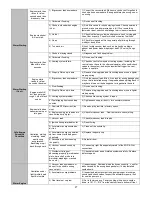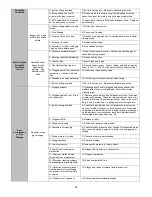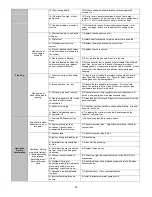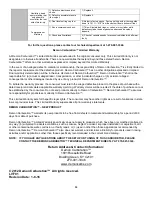
8
Air Cleaner
1. With some air cleaner configurations, it may be necessary to use an air cleaner spacer to provide adequate clearance
between the carburetor and the air cleaner. Depending on the overall height, obtain the proper length 1/4 x 20 stud
(supplied) and install in the carburetor air horn and trim as necessary. Close the hood slowly to ensure adequate
clearance between the air cleaner stud and the hood. If a longer stud is needed, ¼-20 All Thread can be found at
most hardware or home improvement stores and may be cut to length.
WARNING:
Inadequate clearance between the air cleaner and the throttle lever could result in throttle sticking
and uncontrolled engine speed. Check the clearance between the throttle lever, choke linkage
and air cleaner for proper operation. Check the clearance between the air cleaner and the hood
before closing the hood completely.
Priming the Carburetor
Mechanical Fuel Pump
Crank engine for no more than 30 seconds and then pump the accelerator pedal twice. Have an assistant observe to see
that fuel is being discharged from accelerator pump nozzle when accelerator pedal is pumped. If fuel does not discharge
from accelerator nozzle wait 60 seconds and crank engine again.
Note: Engine should not be cranked for more than
30 seconds at time to prevent possible damage to the starting system. Always wait 60 seconds between each
attempt to crank the engine.
Electric Fuel Pump
On vehicles equipped with electric fuel pumps, bump the pump switch on and off to fill the bowls a little at a time. Avoid an
abrupt surge of fuel into an empty carburetor. This can damage the floats and cause flooding. Remember to check for
leaks.
The engine should now be ready to start with a minimal amount of cold cranking.
Ladies and Gentlemen, Start Your Engines!
Get a helper. Unless your car can be started from the engine compartment, starting your engine for the first time should
always be performed with an assistant. A second set of eyes to watch for fuel leaks can be invaluable.
Before engaging the ignition, depress the throttle fully and release once or twice. Now, attempt to start the engine. If the
engine does not fire under reasonable cranking, stop cranking and repeat the process once again. Each engine may
require a different number of pump shots to ease starting. Determine what is best for your engine.
Allow the engine to achieve normal operating temperature before attempting final adjustments to the idle speed or idle
mixture settings. It is however, acceptable to make fuel pressure adjustments during the warm up period.
Preliminary Tuning and Adjustments
The following preliminary adjustments should be made prior to attempting to drive the vehicle.
Curb Idle Speed and Mixture Adjustments
Fine tuning of the idle speed and mixture must be done with the engine at or near operating temperature. A good rule of
thumb is to not attempt adjustments until the engine has achieved 160 degrees water temperature. Adjusting the engine
cold will usually result in a rich mixture at normal operating temperature. It is also helpful to use a tachometer and/or a
vacuum gauge for setting the idle speed and mixture to obtain the highest idle RPM or highest vacuum reading without
adjusting the idle set screw.
Ensure the engine is at idle with the choke fully open and at operating temperature. You may now evaluate the
adjustment of the idle mixture screws (Fig. 9). Turning the screws in (clockwise), reduces the amount of idle fuel and
leans the idle air mixture. Backing the screws out (counter-clockwise), increases idle fuel and enriches the idle air mixture.






































